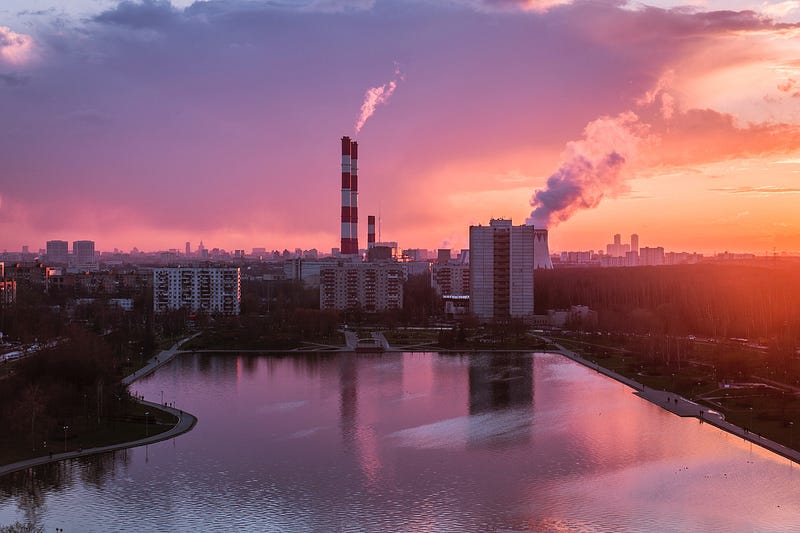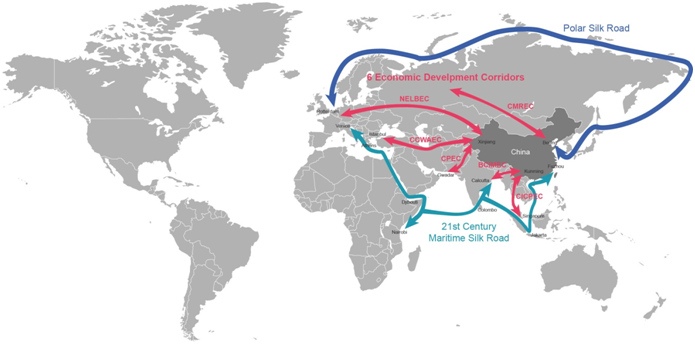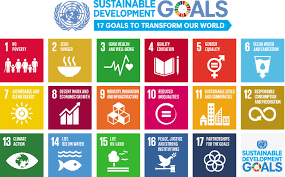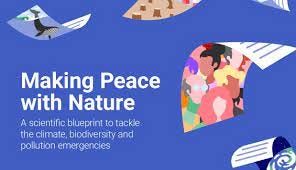Can we improve people’s lives without killing Nature?
 Photo by Alexander Popov on Unsplash
Photo by Alexander Popov on Unsplash
An allegory told by a rat, as related by Robert C. O’Brien in Mrs. Frisby and the Rats of NIMH::
“A woman in a small town bought a vacuum cleaner. Her name was Mrs. Jones, and up until then, she, like all her neighbors had kept her house perfectly clean with a broom and a mop. But the vacuum cleaner did if faster and better, and soon Mrs. Jones was the envy of all the other housewives in town. So they bought vacuum cleaners, too.”
“Vacuum cleaners became so popular, in fact, that the company that made them opened a branch factory in the town. The factory used a lot of electricity, and so did the women with their vacuum cleaners, so the local electric power company put up a big new plant to meet the demand. “
“In its furnaces, the power plant burned coal, and out of its chimneys black smoke poured day and night, blanketing the town with soot and making all the floors dirtier than ever. Still, by working twice as hard and twice as long, the women of the town were able to keep their floors almost as clean as they had been before Mrs. Jones bought a vacuum cleaner in the first place.”
I hesitate to call this story an allegory. It’s more like a history lesson. The rat didn’t say, but I’m sure that the involved manufacturers, advertisers, the electric company and the banks made a lot of money. The Gross Domestic Product (GDP) of the area soared. Only the people, creatures, land and sky were worse off.
The same kind of “progress” happens in real life, on a global scale. It is called “development” and pollutes the environment, forces people to work twice as hard for a little more money, and enriches a small minority. Without doubt, many live in grinding poverty and deserve better lives. But how to improve lives sustainably, meaning without destroying the natural world that is source of all wealth?
In his book Climate, A New Story, Charles Eisenstein describes what development means for people when defined as economic growth, which is how most economists and capitalists define it.
“Economic growth means the growth in goods and services exchanged for money. So, a remote village in India or a traditional tribal area in Brazil represents a great growth opportunity, because the people there barely pay for anything.”
“Imagine a development expert goes there and says “What an investment! These backward people grow their own food — they could buy it instead. They cook their own food too. Restaurants and delis could do it for them much more efficiently. The air is full of people singing; they could buy entertainment and play it through headsets. The children play with each other for free; they could enroll in day care. They follow their adults around to learn traditional skills — these kids could be in school. When a house burns down, the community gets together to rebuild it. They could just buy insurance. Everyone has a strong sense of social identity, a sense of belonging. They could buy brand name products for that.”
“You might ask, ‘How are they going to pay for all that?’ Easy. They earn money by converting local natural resources and their own labor into commodities. The rainforest becomes a palm oil plantation. The mountain becomes a strip mine; the river becomes a hydroelectric plant. The population abandons traditional ways and goes to work in the money economy. A few become doctors, lawyers, and engineers. The rest migrate to the slums.” “In a nutshell, this is the process called “development.”
In the countries where development happens, the GDP goes up. The people are ‘richer’ in dollars and cents. But many, usually most, are poverty-stricken and miserable, having lost their way of life and often their homes, in exchange for shoddy imitations of Western civilization. Rates of depression, addiction, and crime go up. You might recognize this happening in your own cities.
The animals and plants of the forest are rendered homeless and endangered. The rivers stop running; the land becomes desert. Pretty soon, people are starving.
At least, this is how capitalist development works. Banks in rich countries, led by the World Bank, lend money for development to poor countries at substantial interest. They know well that the debtor countries cannot pay them back. They stay in debt forever, paying interest that compounds over time. The loans are used to build highways and ports to export the poor country’s resources, and factories to employ their laborers. Capitalist development means more efficient transfer of poor countries’ wealth to the rich countries.
Even for people whose income rises due to development, their lives may worsen. Development disrupts traditional cultures that have supported people for centuries.
Development without capitalism
When the environmental effects of capitalist development started to become clear in the 1970s, developers started talking about making development “sustainable,” meaning they wouldn’t use up resources or create waste faster than Nature could restore itself. It hasn’t happened. Since inventing the idea called “sustainable development,” industrial civilization has consumed more and more. True sustainability, meaning leaving future generations the same opportunities as this one, is farther away than ever.
Capitalism needs endless growth, so capitalist development can never be sustainable. The system has to take more and more resources and acknowledge no limits. But there are other kinds of development without capitalism. Could they be healthier for people and Earth?
One is socialist China’s Belt and Road Initiative (BRI). This is the most comprehensive development plan in the history of the world. In the words of the Chinese government, BRI is an “all-dimensional, multi-tiered and composite connectivity. It will realize diversified, independent, balanced and sustainable development.”BRI envisions developing Africa, Asia, Eastern Europe, Latin America, and the Middle East, and has signed up partners on each of these continents.
BRI includes the land based Silk Road Economic Belt, comprising six development corridors through Asia and its neighbors. They will be building lots of highways and high-speed rail.
BRI also envisions the 21st Century Maritime Silk Road, to connect land based transport to shipping.
Third, the map below shows the Polar Silk Road, also called the Northern Sea Route, as officially mentioned in China`s Arctic policy. They mean shipping and exploiting the Arctic resources newly exposed by melting ice caps.

Map of the New Silk Road
The BRI’s web site says they will treat all countries equally and coordinate their efforts in five ways:
1. Governments will cooperate on policy and communication mechanisms.
2. All projects will use infrastructure that fits together. (As in, making sure your hose fits onto our pipe.)
3. Reduction of investment and trade barriers, promotion of regional economic integration.
4. Financial integration Coordination and cooperation in monetary policy, set-up of financing institutions.
5. People-to-people bonds Cultural and academic exchange and dialogue, media cooperation.
Most capitalists would applaud. More trade, better connectivity, invest where you want; those are things free-market capitalists always push. True, it sounds way better without the cutthroat competition backed by military force that we have now. But is it really sustainable?
I don’t think so. All this infrastructure they are building is bound to cause immense unintended harm. As the World Bank has discovered and I wrote about here, infrastructure such as roads and dams, no matter how well-intentioned, lead to destruction. People in need will follow them to where they hope to make a living, however they can. This kind of development is how the people logging the Amazon forest get there, and how the logs get shipped out.
Infrastructure like roads and power plants will certainly make people’s material lives easier, but if it degrades what is left of the planet, the benefits won’t last long, and they will be decidedly mixed.
I find the Polar Silk Route especially scary, opening a huge new area to mining and industrial fishing. But I guess that if BRI doesn’t get there, the US Empire will. BRI’s inclusive model beats the current World Bank/IMF model of rich exploiting Nature and the poor, but BRI does not seem remotely sustainable.
Already, China and Russia are cutting down Asian forests at a furious pace to supply building materials for new cities. Human Rights Watch reports on BRI dam projects in Cambodia drowning indigenous land, home to thousands of farmers and fishers and living species. I’m sure the electricity from these dams will help Cambodia develop, but the Earth, people, plants, and animals are suffering.
Is sustainable development possible? The UN SDG
The United Nations has been promoting ‘sustainable development’ since a conference in Rio de Janeiro in 1992. In 2015, UN member states agreed on 17 sustainable development goals (SDG) that they call a “shared blueprint for peace and prosperity for people and the planet, now and into the future.”
Most of these goals involve improving people’s lives in material ways. End poverty. End hunger. Promote health. Quality education, water quality and sanitation, gender equality, and reduced social inequalities are some of them. I can’t argue with them, but how do they protect Nature?

Three goals address the needs of Nature, calling for preserving biodiversity on sea and land, and “responsible consumption and production.” So far so good, but four of the other goals seem to relate specifically to sustainability:, and not necessarily in a good way. These goals are: Affordable, clean energy, Decent work and economic growth, Industry, innovation, and infrastructure, Sustainable cities and communities.
Like BRI, the SDG seem to prioritize human well-being, which sounds way better than prioritizing corporate fortunes. But they apparently define well-being as higher levels of development and consumption. One of the goals calls for “Ongoing, inclusive and sustainable economic growth, full and productive employment and decent work for all.” There’s nothing in there about protecting ecosystems from this growth, and we see what economic growth is doing to the planet already.
Calling desirable things “sustainable” doesn’t make them so. How are SDG and BRI different from capitalist development? As an indigenous leader told Robin Wall Kimmerer in her book Braiding Sweetgrass, “This sustainable development sounds like they just want to keep on taking and not giving back. Tell them they need to consider first how they will give to the Earth.”
Some at the UN see this
Eight years after the SDG were published, very little has improved, and some at the UN seem to realize they need a different model. In 2021, they published a document called Making Peace with Nature that takes the SDG in a different direction. Lead authors Ivar A. Baste and Robert T. Watson write, “Humanity can make peace with nature and tackle the combined environmental crisis by redeploying human skills from transforming nature to transforming the social and economic fabric of society, meaning people’s relationship with nature and with each other.”

They call for “inclusive wealth accounting,” which measures the value of natural capital, including clean water and air, and a stable global climate, and of social capital (education, community organization) along with human skills and knowledge, and manufactured capital (buildings, infrastructure, and machines).
Notice they are valuing real things, and not the mounds of money called financial capital that run the world. Notice that they value things that never show up in economic accounting because they are not sold for profit, and they insist that all wealth is ultimately dependent on preserving natural capital. They are calling for development that gives back to Nature instead of just taking from it, not insisting on economic growth. This could be a substantial breakthrough.
Could BRI and SDG come together?
The bottom line is that the BRI or the SDGs are far better than today’s models, but neither is truly sustainable. If they were combined, though, behind leadership that embraced Making Peace with Nature, they could change the world. It’s a far better hope than the US dominated World Bank/IMF system, and they may have the power to replace it.
BRI gets things done. What if they focused less on growth and more on sustainability? The Chinese have already transformed huge areas of desert in the Loess Plateau into farmland and turned 200 cities into water cycling “sponge cities.” They do seem to take Nature seriously.
The many governments subscribing to BRI are big enough to change the course on which the West has set the world. The problem is most don’t see the necessity or the benefits of working with Nature. How will they ever put Nature first?
The same applies to the UN SDG. UN delegates represent governments that represent the rich. How can they do what’s right for people and planet? But if they decided to, they have the power.
Maybe that’s where we come in — making enough noise that they hear us, and modeling enough regenerative practices that they see us. Maybe we could shut down the World Bank and IMF or transform them into institutions that focus on restoring Earth. Cancel all the debt that forces countries to tear up and sell off their natural treasures. Can we (the global “we”) demand that China and the UN put Nature first, and that they work together to achieve the SDG and BRI’s laudable goals?
And the dinosaur in the room: Can we persuade or force the United States empire to stop trying to dominate the world and cooperate with the rest of us? Admittedly, such transformation would be extraordinarily difficult. But it’s a do-or-die situation. What else have we got to do?
— — —
Thanks for reading! Please comment, share, or steal. Follow me on Twitter, on Facebook or on Medium. Hire me for freelancing, editing, or tutoring on Linked In
